AMD EPYC 7252 Market Positioning
Thes chips are not released in a vacuum instead, they have competition on both the Intel and AMD sides. When you purchase a server and select a CPU, it is important to see the value of a platform versus its competitors. Here is a look at the overall competitive landscape:
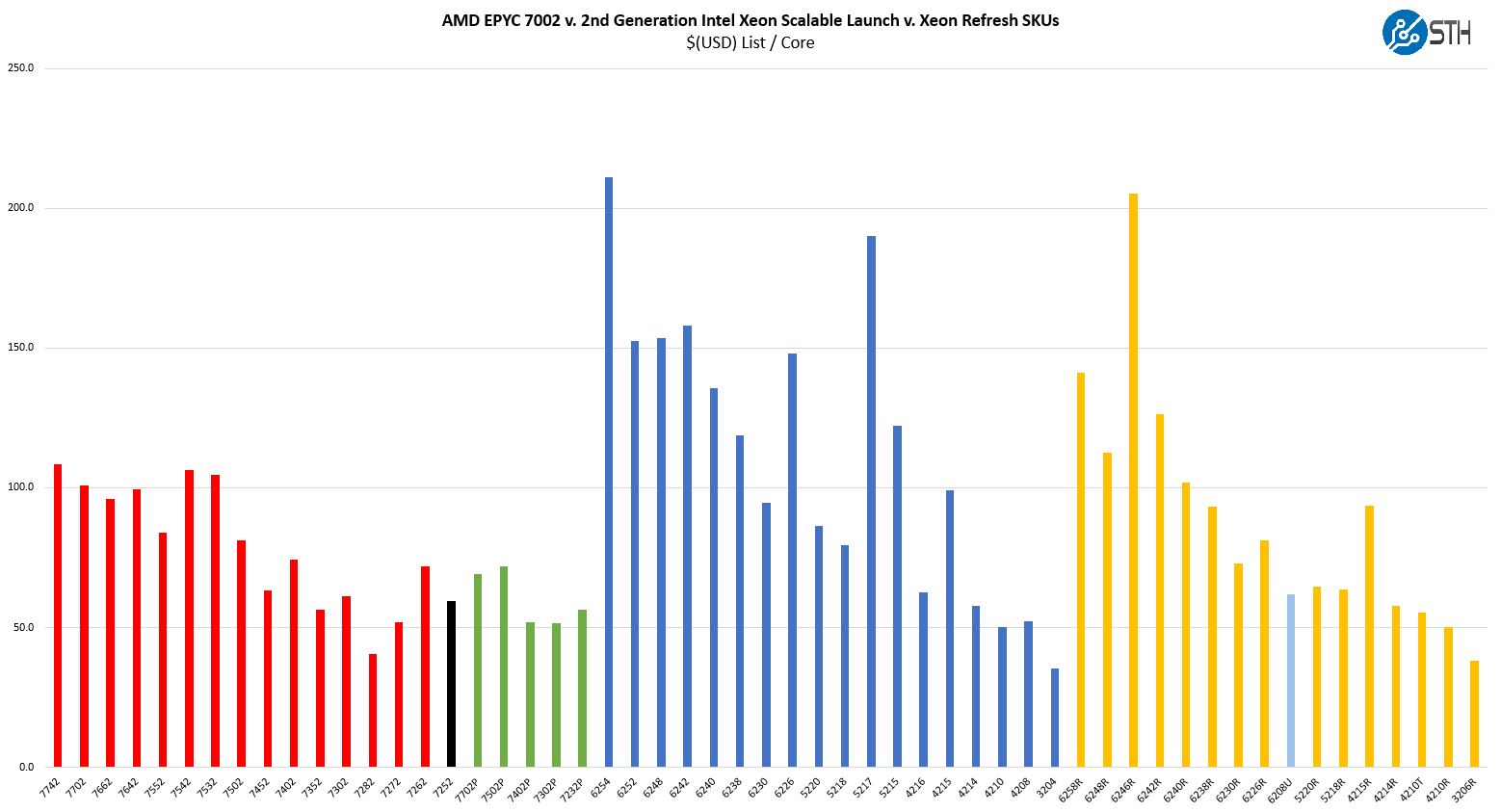
One can see that the AMD EPYC 7252 falls squarely into the mainstream pricing model here.
AMD EPYC 7252 v. AMD EPYC
Taking a quick look at some of the upgrade options one may look at with the AMD EPYC 7252, we can narrow down the full set of chips into this view:

Here we can see that there are a few logical ways to move within the stack. One can move up to the EPYC 7272 or EPYC 7282 at a relatively low cost but get a lot more core count per dollar. AMD also now has the EPYC 7Fx2 parts that we covered in our AMD EPYC 7F52 review for the 8-core performance market. The EPYC 7252 then is the lowest cost, 4-channel optimized, dual-socket EPYC part on the market.
The bigger question is what can one realistically save using these parts. We put together a 4-DIMM low-spec server to match the 4-channel memory-optimized nature of the solution. It just so happens that this is a config we also have power consumption figures for, so we can calculate a 3-year operating TCO for the configuration less software costs.
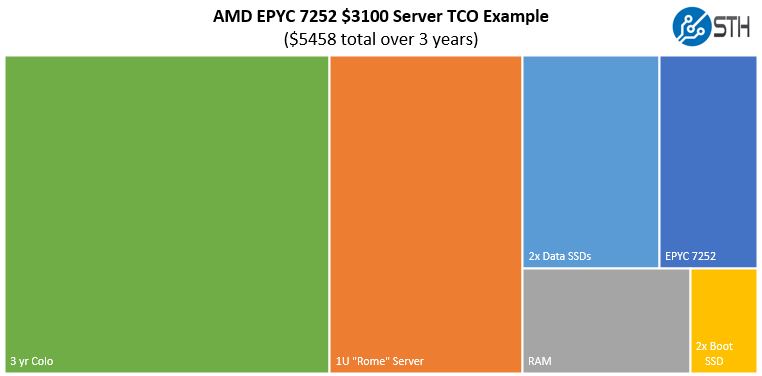
We are using a single-socket server here which lets us show off the EPYC 7232P comparison. One saves around $25 in list price plus another $18 using our power costs, over three years. The result is a $43 lower TCO or about 0.77% lower TCO. On average, we were getting a few percent more performance, which is why we said the EPYC 7232P is hard to recommend over the EPYC 7252 in all but the most budget constrained scenarios.
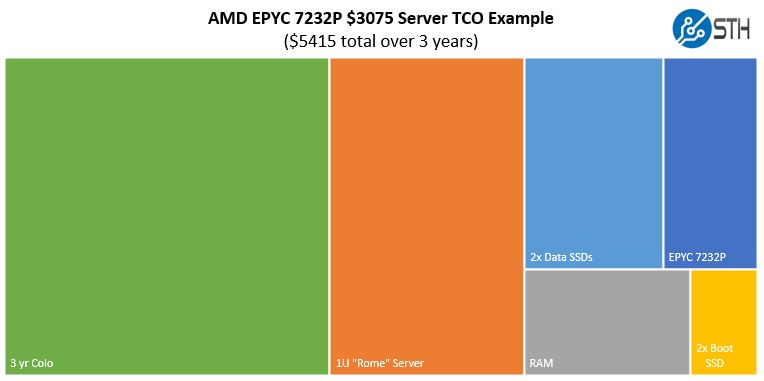
We also wanted to show the result of moving up the stack. For around $197 or a 3.61% increase in 3 year cost, we often see 70-90% better performance from having twice as many cores.
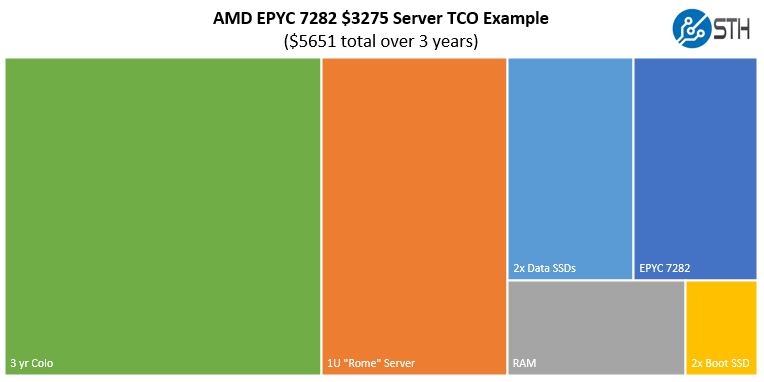
While at a CPU-level one may assume it makes sense to buy the EPYC 7252 for the lower costs, the reality is that in many cases a small investment can yield a lot more performance.
This makes it extremely difficult to recommend the EPYC 7252 for any application that may be able to utilize the additional core count.
This is AMD’s lowest cost dual-socket capable part. While we saw it offers performance better than what Intel offers, it also costs more.
AMD EPYC 7252 v. Intel
When we look at the lowest-cost SKUs from the AMD and Intel Xeon Bronze stack we see the dilemma:
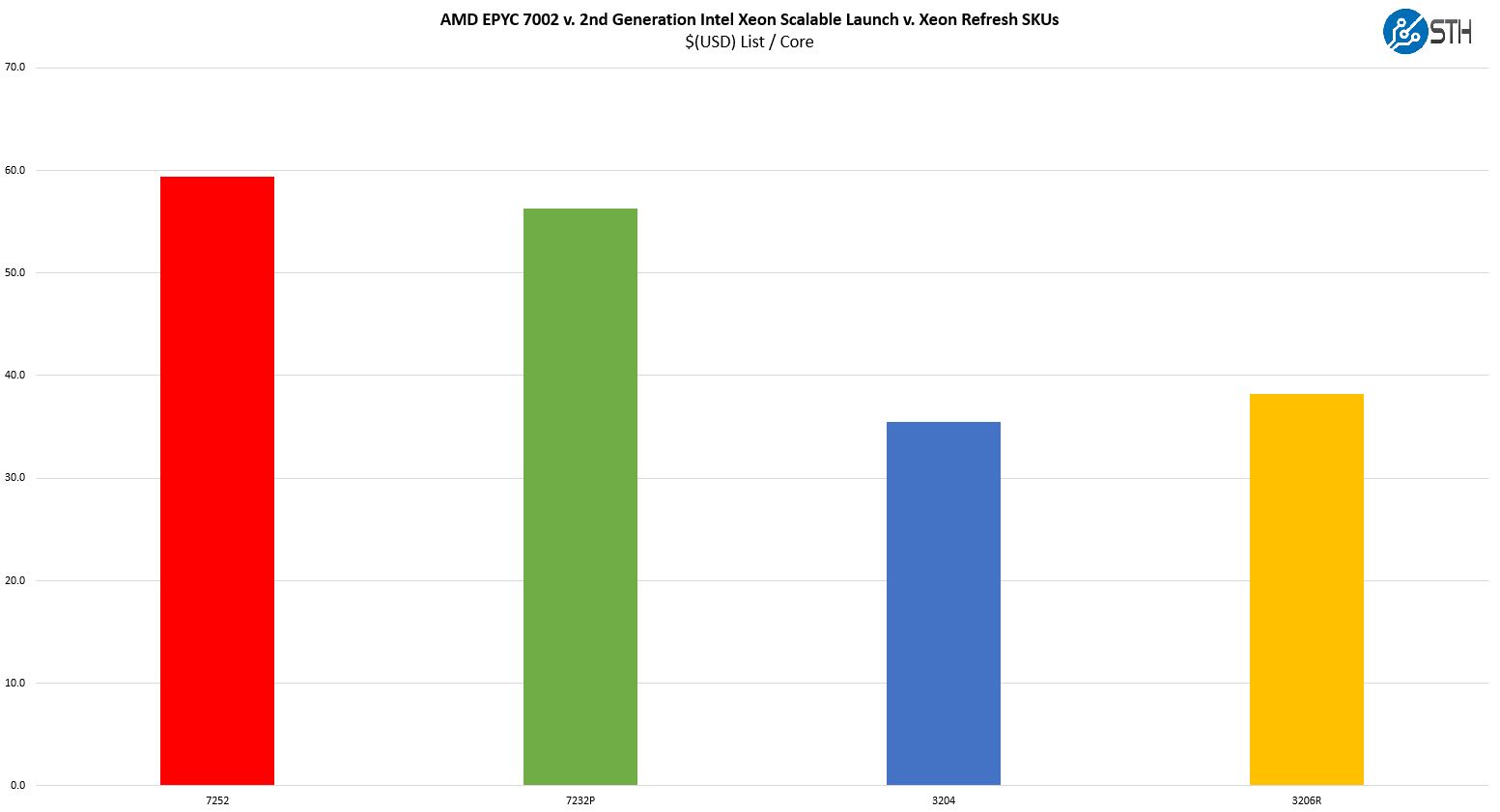
AMD is pricing higher to capture the increase in performance while Xeon Bronze is targeted at something different. Xeon Bronze is targeted at the lowest cost per unit. The Intel Xeon Bronze 3206R is just over $300 list price and the Intel Xeon Bronze 3204 is well under that level. While AMD can tout a performance crown, Intel has ultra-low cost parts to use to scale its sockets to lower performance and cost.
For applications that are cost-sensitive above all else, such as selling servers with low-cost CPUs so that they can be counted as “server” rather than “barebones” sales, AMD is actually not competitive with the EPYC 7252 at list pricing. Those servers often have only a single DIMM, and at most a single drive which makes Now, what AMD is actually selling these chips to large OEMs such as Dell EMC and HPE after incentives and discounts are likely drastically different. Still, the list price gap is enormous for this segment.
Final Words
For a modern 8-core SKU, the AMD EPYC 7252 is a nice part. It runs in dual-socket systems. It also can provide anywhere from 64 to 128 PCIe Gen4 lanes for systems that need connectivity above x86 performance. Let us be clear, there is one reason to buy this chip: if the extra $175-200 (over three years) is too much to upgrade to a higher-end EPYC SKU.
While it may not be the fastest chip, one can legitimately argue that a single EPYC 7252 in a single socket server is a faster and lower-cost option to dual Intel Xeon Bronze SKUs while providing more connectivity. That is part of AMD’s overall theme of extolling the virtues of single-socket platforms.
For companies looking to scale a dual-socket EPYC platform from whichever vendor they choose from high-end dual 64-core AMD EPYC 7742 solutions to frequency optimized AMD EPYC 7F52 parts, then down to the lowest-end of the single and dual CPU configurations in the platforms, the EPYC 7252 fits well.
While AMD cannot necessarily scale the EPYC 7002 series down to Intel’s performance and cost levels, those same sockets scale to much higher levels of performance. As a result, what this is showing, along with the top-bin 64-core SKUs, is that AMD is effectively moving the entire performance range to a higher level, even at the low-end.




Timely review. Thanks. Hoping to see this EPCY in more PCIe lane-intensive offerings.
I bought this cpu a few months ago for my home server (running proxmox) and it’s a nice upgrade over my 9 year old Xeon E3-1230. I waffled over getting the 7262 for the extra 64MB of ram but based on these benchmarks I’m glad I didn’t.
64MB of cache